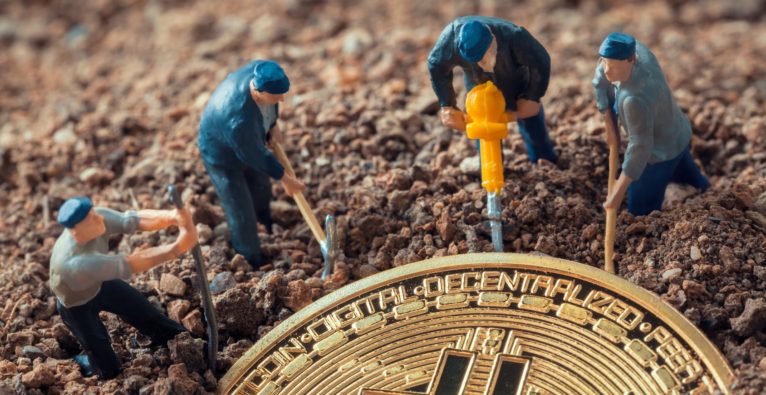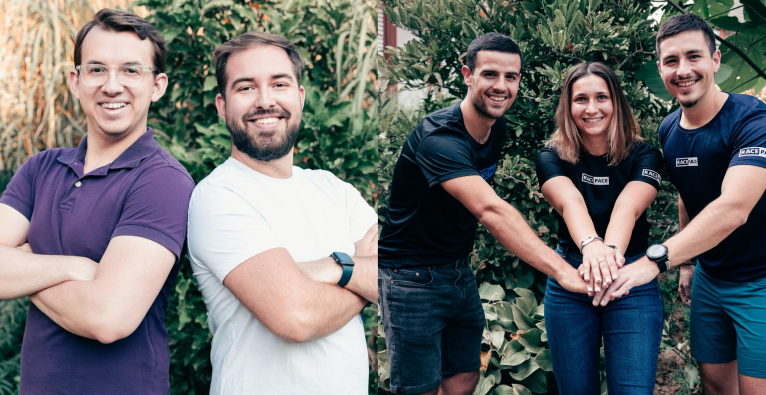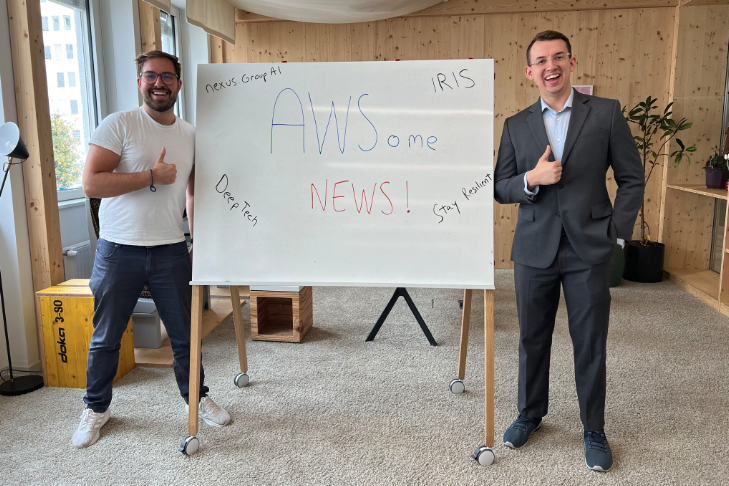✨ AI Kontextualisierung
Krypto-Mining – das „Abbauen“ von Krypto-Währungen ist inzwischen einer breiteren Öffentlichkeit (wenn auch bei weitem nicht jedem) ein Begriff. Bekannt wurde es medial vor allem durch das Dauerthema vom extrem hohen Stromverbrauch von Bitcoin. Von einem globalen Wert in der Höhe des Verbrauchs der Slowakei ist da etwa die Rede. In einer anderen Statistik wird der Stromverbrauch von rund drei Millionen US-Haushalten als Vergleichswert herangezogen – und das bei jährlich rund 100 Millionen Transaktionen. Dem steht der Verbrauch des Kreditkarten-Anbieters Visa entgegen: 50.000 US-Haushalte – 82 Milliarden Transaktionen. Da das Mining in direkter Verbindung mit dem Abschluss von Transaktionen steht, steigt mit der Zahl der Transaktionen auch der Energieverbrauch – aber mehr dazu später.
+++ Grundwissen: (Krypto-)Mining – einfach erklärt +++
Hinkende Vergleiche
Von so manchem Krypto-Enthusiasten wird in der Diskussion angemerkt, dass der weltweite Strom-Verbrauch für den Gold-Abbau und die Papiergeld-Produktion jeweils noch über jenem von Bitcoin liege. Die Vergleiche hinken. Denn schließlich wird mit Papiergeld momentan noch ein Großteil der Weltbevölkerung versorgt – Bitcoin ist, trotz des Hypes, noch ein Minderheitenprogramm. Und der aufgrund erschöpfter Vorkommen extrem mühsame (und energieintensive) Gold-Abbau wird heute vor allem wegen des großen Bedarfs für die Elektronik-Produktion weiter vorangetrieben. Soll heißen: Die Rechner, mit denen Mining betrieben wird, nehmen einen Teil dieses Energieverbrauchs sogar noch zusätzlich mit.
Stromverbrauch bei Massenverbreitung nicht zu stemmen
Es bedarf keiner mathematischen Höchstleistung um zu erkennen: Würde sich Bitcoin oder eine andere mit Mining arbeitende Krypto-Währung (in der heutigen Form) weltweit in der Masse etablieren, würde der Stromverbrauch absurde Höhen erreichen. Man könnte auch sagen, er wäre nicht zu stemmen. Aber warum verbraucht Mining eigentlich so viel Strom? Um das zu erklären muss man die Idee hinter dem Vorgang verstehen. Dieser ist so alt wie Bitcoin selbst, „feiert“ also bald seinen zehnten Geburtstag. In der Krypto-Welt ist das (noch) eine Ewigkeit. Wie sich die unter dem Pseudonym Satoshi Nakamoto bekannten Bitcoin-Entwickler damals die Zukunft mit dem System vorgestellt haben, ist nicht bekannt. Prinzipiell müssten sie aber bereits gewusst haben, dass es sich nur bis zu einer gewissen Verbreitung weiterführen lässt. In der Anfangszeit und noch bis vor relativ Kurzem, gab es die Problematik mit dem Stromverbrauch nicht.
In einem dezentralen System müssen die Nutzer selbst diese Leistungen erbringen.
Warum gibt es Mining?
Krypto-Mining hat einen leicht erklärbaren Hintergrund. Es musste ein faires System gefunden werden, wie neu kreierte Bitcoins (und später auch andere Coins) unter die User gebracht werden können. Die Lösung: Man belohnt sie mit Coins für die Leistungen, die sie für das gesamte System, also die Blockchain, erbringen. Und in einem dezentralen System müssen ja die Nutzer selbst diese Leistungen erbringen. Konkret ist es ein spezieller Vorgang, der in der Blockchain von einzelnen Usern für die gesamte Community durchgeführt werden muss: Das Erstellen sogenannter Hashs, wofür sich später der Begriff Mining etabliert hat.
Bedeutung für die Blockchain
Zur Erklärung: Ein Block in der Blockchain enthält Informationen über eine gewisse Anzahl an Transaktionen (bzw. anderen Peer-to-Peer Vorgängen). Hat die Menge an Transaktionen eine gewisse Speichergröße erreicht (bei Bitcoin etwa ein Megabyte), muss der Block „abgeschlossen“ werden, damit das Gesamtsystem flüssig bleibt. Die Kette abgeschlossener Blöcke ist – klar – die Blockchain. Diesen Abschluss bildet ein Hash. Der Hash wird gerne als eine Art digitales Sigel beschrieben. In dieses Sigel werden die Informationen aus dem Block hineingerechnet und codiert. Ist der Hash einmal errechnet, kann der Inhalt des Blocks nicht mehr geändert werden.
+++ Grundwissen: Die Blockchain – einfach erklärt +++
Wer bekommt ein Stück vom Kuchen?
Und wieviel Rechenleistung braucht man, um die Information aus einem rund ein Megabyte großen Block zu codieren? (Bei anderen Kryptowährungen sind es mitunter mehrere MB). Eigentlich wäre es nicht viel. In der Anfangszeit von Bitcoin wurde das daher von den damals noch wenigen Usern mit ihren Laptops oder PCs zuhause erledigt. Doch Satoshi Nakamoto war bereits in der Konzeption klar: Wenn das Interesse steigt und die User-Zahl größer wird, wollen immer mehr Nutzer sich ihre Belohnung holen. Und wenn das so einfach geht, wie wird dann entschieden, wer zum Zug kommt und ein Stück vom Kuchen bekommt?
Das Gesamtsystem ist unter der Bezeichnung „Proof of Work“ bekannt
Mehr Difficulty, weniger Belohnung
Die Lösung: Es darf nicht so einfach bleiben. Steigt die Anzahl an Minern bzw. die gesamte Mining-Leistung, steigt durch den Algorithmus auch die Komplexität des Rechenvorgangs, der für den Hash benötigt wird (Mining-Difficulty), künstlich. (Die Komplexität sinkt wieder, wenn die Mining-Leistung heruntergeht – aber dazu später mehr). Um an seine Belohnung zu kommen, muss man eben etwas investieren. Das Gesamtsystem ist unter der Bezeichnung „Proof of Work“ bekannt. Hinzu kommt aber noch eine zweite Funktion des Algorithmus: Bei einer bestimmten Anzahl von abgeschlossenen Blocks (210.000), halbiert sich die Anzahl an Bitcoins, die man für einen Hash bekommt. Waren es Anfangs 25, sind es seit Juli 2016 12,5. Und bei der derzeitigen rapiden Ausbreitung dürfte es nicht mehr allzu lange dauern, bis es 6,25 werden.
Man braucht viel Kapital, um mitspielen zu können
Zurück zur Mining-Difficulty. Da sich Mining bei stetig steigenden Bitcoin-Preisen als lukrativ erwiesen hat, sprangen immer mehr Firmen auf den Zug auf. Der Vorgang wurde professionalisiert – es entstanden sogenannte Mining-Farmen. Das sind große Rechenzentren, die nichts anderes machen, als Hashs zu berechnen. Und wer mehr Rechenleistung einbringt, kann mehr Blöcke abschließen. Anders gesagt: Man braucht viel Kapital, um mitspielen zu können. Die größten Mining-Farmen gibt es in China, wo Strom aus größtenteils ungefilterten Kohlekraftwerken extrem günstig zu haben ist. Der einfache User mit seinem Laptop hat längst keine Chance mehr. Durch die weltweit laufend ausgebaute Mining-Leistung, wird auch die Difficulty immer höher. Auch mit speziellen Systemen für den Hausgebrauch, die noch vor wenigen Monaten lukrativ waren, ist de facto nichts mehr zu holen. Sie werfen zwar Coins ab, aber die hohen Hardware-Kosten amortisieren sich verbunden mit den hohen Stromkosten, wenn überhaupt, erst nach sehr langer Zeit.
Lukrativ ist das Geschäft hauptsächlich deswegen (noch), weil der Kurs der Kryptowährungen zugleich so stark ansteigt.
Stromverbrauch steigt überproportional zur Verbreitung
Womit wir wieder bei der Strom-Problematik wären. Mit der steigenden Anzahl an Transaktionen und dem steigenden Kurs geht eine laufend steigende Gesamt-Mining-Leistung einher. Die führt zu einer ständig wachsenden Mining-Difficulty. Und damit steigt der Stromverbrauch überproportional zur Verbreitung von Kryptowährungen. Das bedeutet: Der Output wird im Verhältnis zu den eingesetzten Stromkosten immer geringer. Auch für die großen Mining-Betreiber gilt daher: Lukrativ ist das Geschäft hauptsächlich deswegen (noch), weil der Kurs der Kryptowährungen zugleich so stark ansteigt.
Bei 21 Millionen Bitcoins ist sowieso Schluss
Was aber wenn der Kurs sinkt oder nicht stark genug steigt? Wenn die Stromkosten dann tatsächlich einmal höher werden, als der Ertrag, werden die Mining-Betreiber ihre Rechner herunterfahren. Die gesamte Mining-Leistung sinkt. Und nach einiger Zeit (es können bis zu 14 Tage sein) adaptiert der Algorithmus auch die Mining-Difficulty und senkt sie. Ist das Problem damit also gelöst? Nein, denn erstens werden viele Miner ihre Rechner dann wieder hochfahren. Zweitens bleibt das Problem, dass sich alle 21.000 Blocks die Anzahl an Bitcoins pro Hash halbiert (Bei anderen minbaren Kryptowährungen gibt es ähnliche Funktionen im Algorithmus). Und das dicke Ende: Bei 21 Millionen Bitcoins ist sowieso Schluss. Denn mehr können aufgrund des Algorithmus nicht entstehen (Momentan gibt es schon fast 17 Millionen. Andere Kryptowährungen wie Ethereum haben diese Einschränkung nicht). Wer danach die Hashs generiert, ist auch unklar.
Mining hat ein Ablaufdatum
Es kommt der Zeitpunkt, wo es nicht mehr lukrativ ist
Im Moment behelfen sich Mining-Unternehmen noch mit flexiblen Lösungen. Durch die Nutzung mehrerer optimierter Hardware-Systeme können sie immer die Kryptowährung minen, die gerade am lukrativsten ist. Außerdem finden sie immer billigere Strom-Quellen und energieeffizientere Systeme. Aber – hier wiederholt sich die Floskel – es bedarf keiner mathematischen Höchstleistung um zu erkennen: Mining hat ein Ablaufdatum.
Erstens kommt irgendwann zwingend der Zeitpunkt, an dem es nicht mehr lukrativ ist. Das dürfte den großen Mining-Unternehmen egal sein, weil sie bis dahin genug Geld herausholen können. Für Kunden von Cloud-Mining-Lösungen und dergleichen wird das aber zum Problem werden. Und zweitens – und das ist wahrscheinlich das noch viel größere Thema – ist der Durchbruch von Kryptowährungen zur großen Masse der Menschen vom Stromverbrauch her schlicht nicht möglich. Abgesehen davon ist das Vorhaben aus Umweltschutz-Sicht blanker Wahnsinn. Denn zur Erinnerung: Es geht (bei Bitcoin) um die Vercodung von einem Megabyte Daten. Dass diese so aufwendig ist, wird künstlich durch den Algorithmus hervorgerufen. Bei Ethereum ist es (noch) recht ähnlich.
+++ Bitcoin: 8 Probleme der bekanntesten Kryptowährung +++
Alternative „Proof of Stake“
All diese Argumente sind in der Krypto-Entwicklerszene natürlich bekannt. Und sie werden mit Sorge betrachtet. Deswegen wird bereits seit längerem daran gearbeitet, dieses „Proof of Work“-Konzept zu ersetzen. Momentan größter Herausforderer ist das „Proof of Stake“-Konzept. Auch bei diesem werden die Hashs von Usern generiert und es gibt dafür Belohnung. Zum Zug kommen aber nicht jene User mit der höchsten Rechenleistung. Stattdessen wird anhand unterschiedlicher Parameter vom Algorithmus entschieden. Verschiedene Blockchains nutzen hier unterschiedliche Kriterien. So wird etwa das Vermögen (also die Anzahl an gehaltenen Coins des Users), die „Treue“ (also die Zeit, die der User schon dabei ist) und mitunter auch schlicht der Zufall dafür herangezogen.
Ethereum arbeitet an Umstieg
Als prominentester Vertreter und dennoch keineswegs ausgereifte Umsetzung des „Proof of Stake“-Konzepts gilt der Coin Dash. Dort kommen aber nur User, die über 1000 Coins (momentan rund eine Million US-Dollar) halten in den Genuss einer entsprechenden Option. Kürzlich startete der neue Coin Cardano mit einem „Proof of Stake“-Konzept durch und landete innerhalb kürzester Zeit in den Top 10 der weltgrößten Kryptowährungen. Intensiv arbeitet man momentan bei Ethereum am Umstieg vom „Proof of Work“-Konzept auf das „Proof of Stake“-Konzept. Ein bestimmter Prozentsatz an Blocks wird bereits über das neue System verschlüsselt. Dieser soll nun stetig wachsen. Neben „Proof of Stake“ bringen Blockchain-Entwickler momentan laufend noch weitere Alternativen vor und versuchen damit im Rennen der Coins nach oben zu kommen.
Fazit: Krypto-Mining hat keine Zukunft
Die schrittweise Durchsetzung anderer Proof-Konzepte könnte dann letztendlich auch das endgültige Aus für Mining bedeuten. Denn der Vorgang wird dadurch schlicht nicht mehr gebraucht. Allerdings: Auf der Bitcoin-Blockchain ist ein Umstieg nahezu ausgeschlossen. Denn bei einer Änderung des Algorithmus müssen alle User mitgehen. Das hat schließlich schon mehrmals zu Abspaltungen (Hard Forks) geführt. Doch auch dort gilt aufgrund der oben genannten Gründe eine klare Antwort auf die im Titel gestellte Frage: Es funktioniert wohl noch eine Zeit lang. Aber Krypto-Mining hat keine Zukunft.
+++ “Gefahr für Finanzsystem” – beflügeln Notenbank-Warnungen die Krypto-Community? +++
Disclaimer: Dieser Beitrag ist auf Basis aufwändiger Recherche und zahlreicher Experten-Gespräche entstanden. Die Conclusio der Analyse spiegelt dabei die Meinung des Autors wieder. Die dargestellte Faktenlage muss nicht zwingend zum beschriebenen Ergebnis führen.






